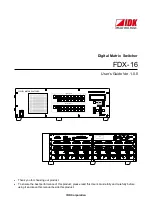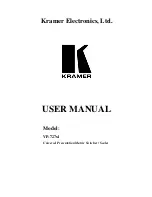
Operation Manual – Stack-Cluster
H3C S3100 Series Ethernet Switches
Chapter 2 Cluster
2-4
2.1.3 How a Cluster Works
HGMPv2 consists of the following three protocols:
z
Neighbor discovery protocol (NDP)
z
Neighbor topology discovery protocol (NTDP)
z
Cluster
A cluster configures and manages the devices in it through the above three protocols.
Cluster management involves topology information collection and the
establishment/maintenance of a cluster. Topology information collection and cluster
establishment/maintenance are independent from each other. The former, as described
below, starts before a cluster is established.
z
All devices use NDP to collect the information about their neighbors, including
software version, host name, MAC address, and port name.
z
The management device uses NTDP to collect the information about the devices
within specific hops and the topology information about the devices. It also
determines the candidate devices according to the information collected.
z
The management device adds the candidate devices to the cluster or removes
member devices from the cluster according to the candidate device information
collected through NTDP.
I. Introduction to NDP
NDP is a protocol used to discover adjacent devices and provide information about
them. NDP operates on the data link layer, and therefore it supports different network
layer protocols.
NDP is able to discover directly connected neighbors and provide the following
neighbor information: device type, software/hardware version, and connecting port. In
addition, it may provide the following neighbor information: device ID, port full/half
duplex mode, product version, the Boot ROM version and so on.
z
An NDP-enabled device maintains an NDP neighbor table. Each entry in the NDP
table can automatically ages out. You can also clear the current NDP information
manually to have neighbor information collected again.
z
An NDP-enabled device regularly broadcasts NDP packet through all its active
ports. An NDP packet carries a holdtime field, which indicates how long the
receiving devices will keep the NDP packet data. The receiving devices store the
information carried in the NDP packet into the NDP table but do not forward the
NDP packet. When they receive another NDP packet, if the information carried in
the packet is different from the stored one, the corresponding entry in the NDP
table is updated, otherwise only the holdtime of the entry is updated.
















































